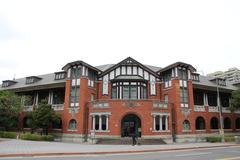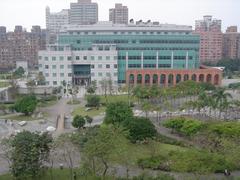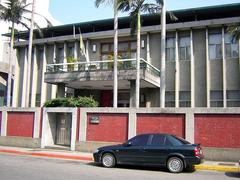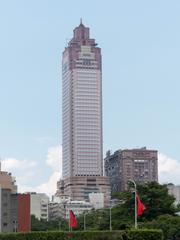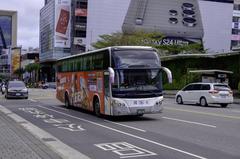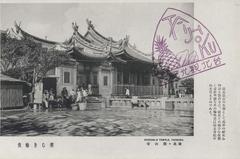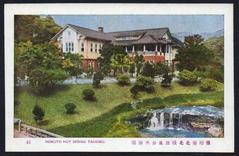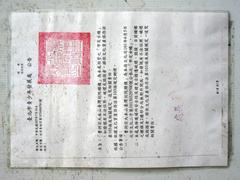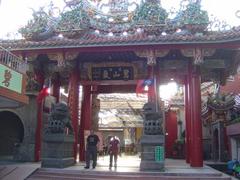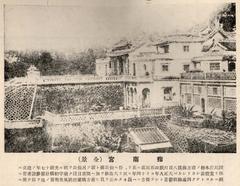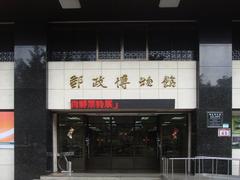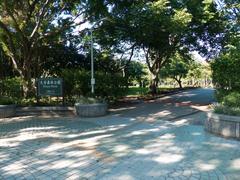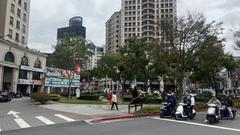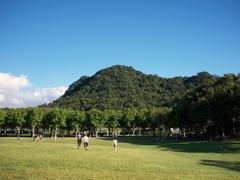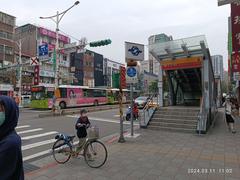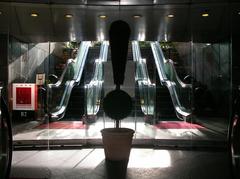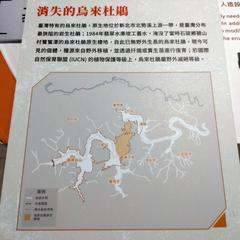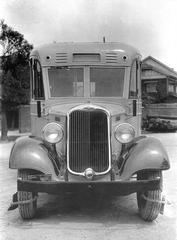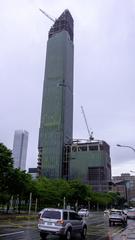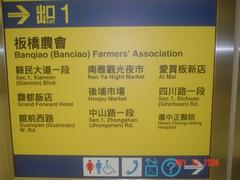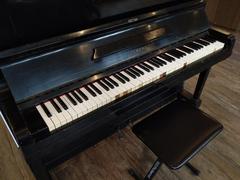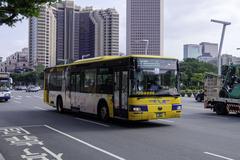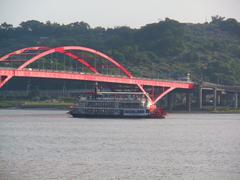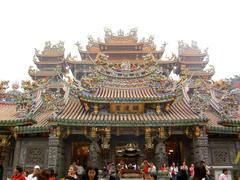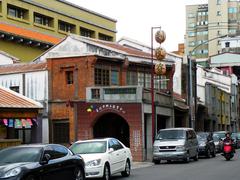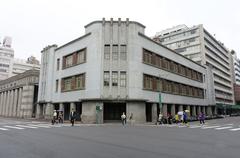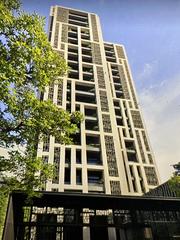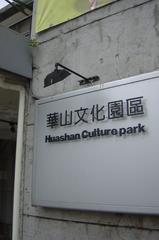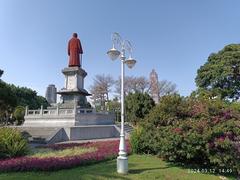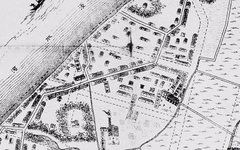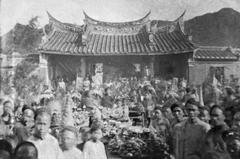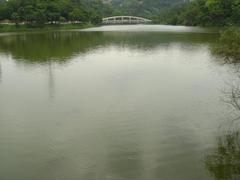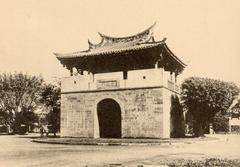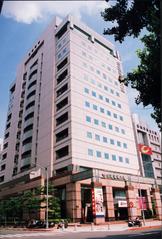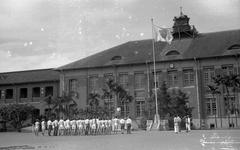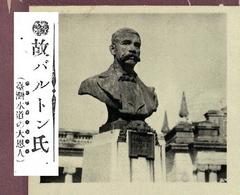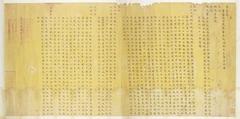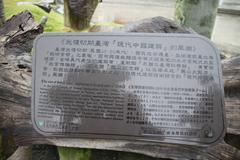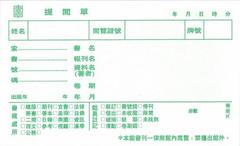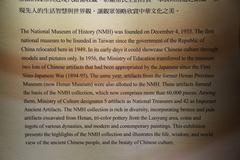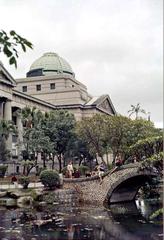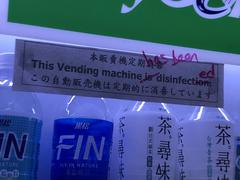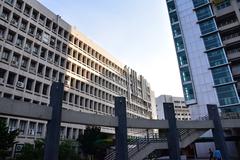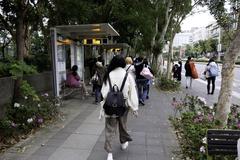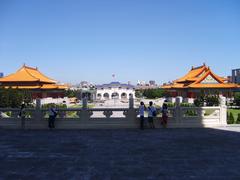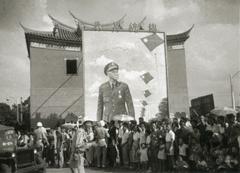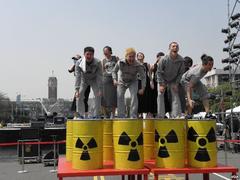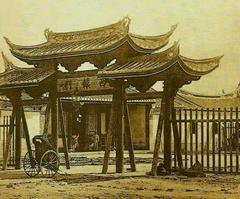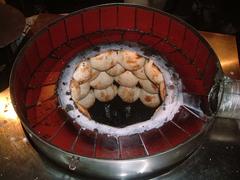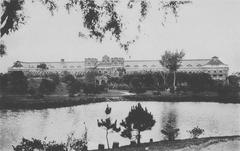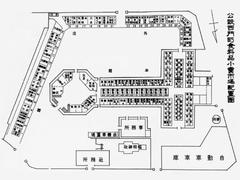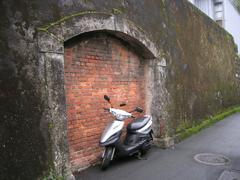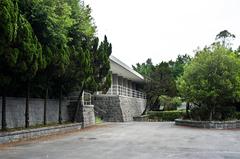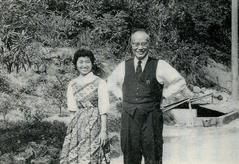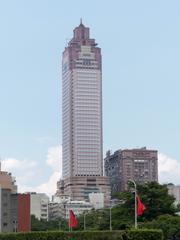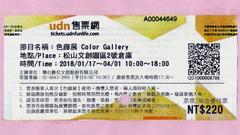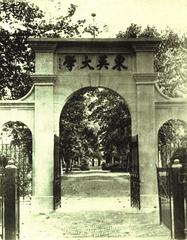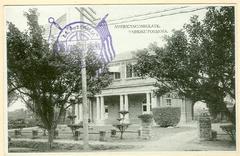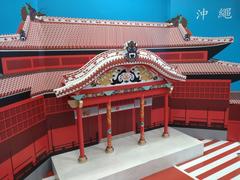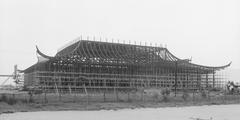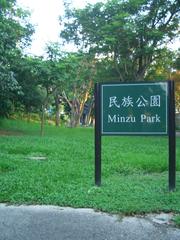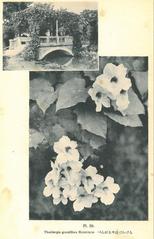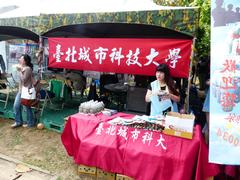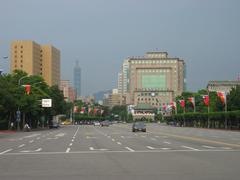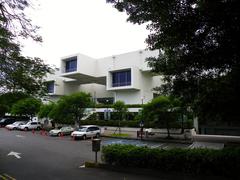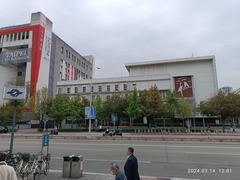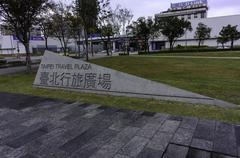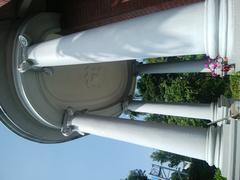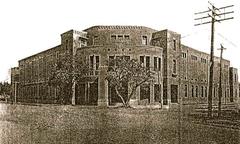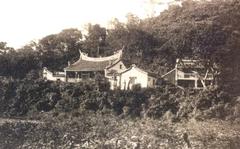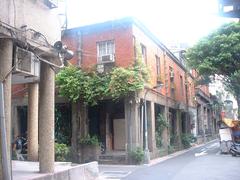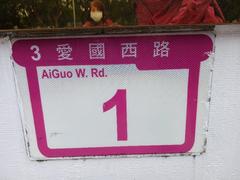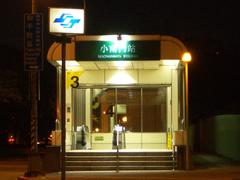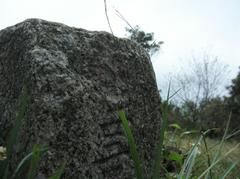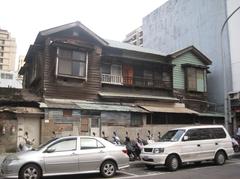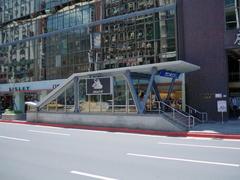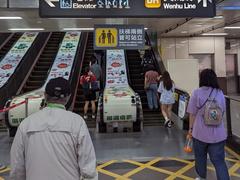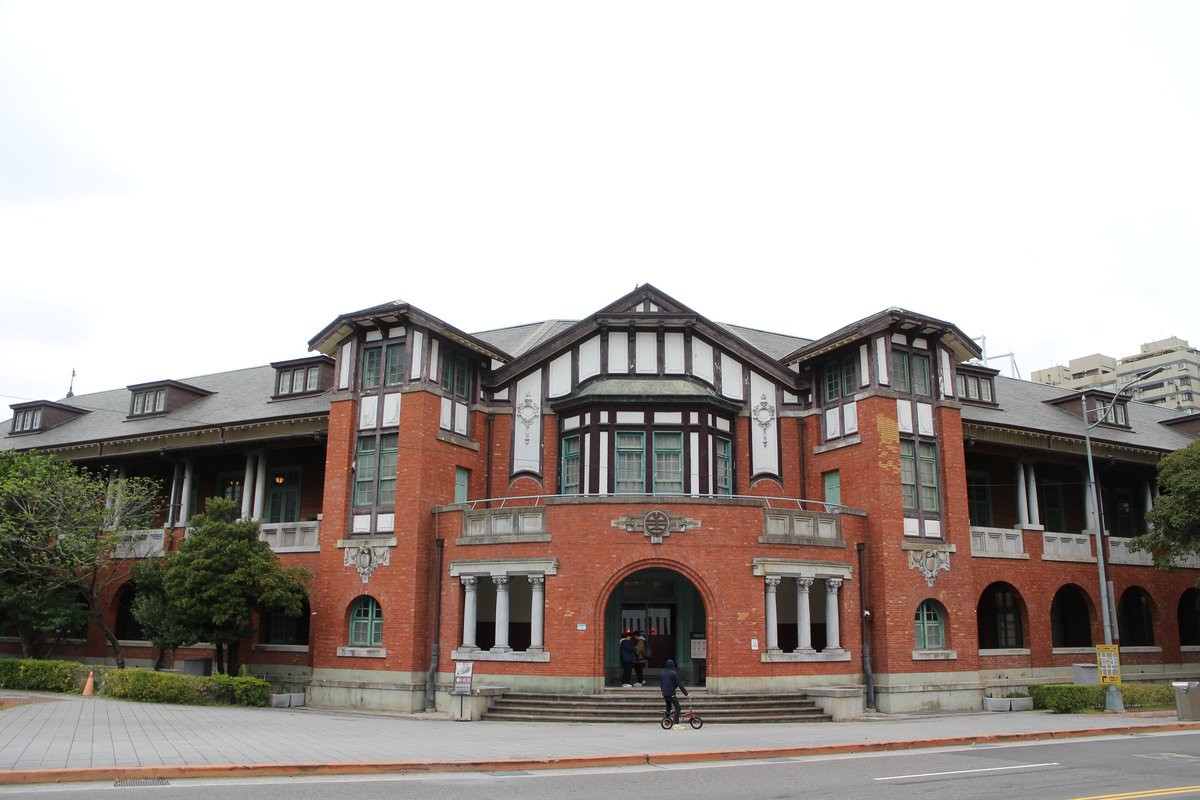
Railway Department of the Government-General of Taiwan Taipei: Visiting Hours, Tickets, and History Guide
Date: 14/06/2025
Introduction
Situated in Taipei’s Zhongzheng District, the Railway Department of the Government-General of Taiwan—known today as Railway Department Park—serves as an enduring testament to Taiwan’s railway heritage, colonial legacy, and architectural transformation. Originally established during the late Qing Dynasty and fundamentally shaped by Japanese colonial rule, the site chronicles more than a century of Taiwan’s modernization and urban development. Through meticulous restoration, visitors can experience a unique blend of Japanese, Western, and Chinese architectural styles, now preserved as part of the National Taiwan Museum system.
This detailed guide explores the historical trajectory and architectural significance of the Railway Department building. It also provides practical information on visiting hours, ticketing, accessibility, guided tours, and nearby attractions, making it an essential resource for travelers, history buffs, and architecture enthusiasts alike. Whether you are drawn by the building’s Tudor Revival and neo-imperial details or are intrigued by the profound impact of railways on Taiwan’s social and economic landscape, the Railway Department Park promises an immersive journey through Taiwan’s past and present (Taipei Times; National Taiwan Museum; Wikipedia).
Table of Contents
- Historical Overview
- Architectural Features and Innovations
- Cultural Significance
- Visiting Information
- Museum Exhibitions and Interactive Displays
- Unique Site Features
- Visitor Logistics
- Recommended Visit Duration
- Practical Tips
- Accessibility
- Tickets, Passes, and Discounts
- Safety and Policies
- Accessibility for International Visitors
- FAQ
- Related Attractions
- Conclusion and Call to Action
- References
Historical Overview
Qing Dynasty Foundations
The roots of Taiwan’s railways trace back to the late Qing Dynasty, with the Keelung–Hsinchu railway launching in 1893. Spanning about 100 kilometers, this pioneering line marked the start of the island’s rail era, though it required substantial improvement by the time Japan took control in 1895 (Wikipedia).
Japanese Colonial Rule (1895–1945): Modernization and Expansion
After the Treaty of Shimonoseki (1895), Taiwan became a Japanese colony. The Japanese administration prioritized railway expansion and modernization, rebuilding the Qing-era line with advanced materials and extending the network across the island. This transformation made railways central to economic growth, urban restructuring, and military logistics. The construction of the Railway Department building itself reflected contemporary Western and Japanese architectural influences and symbolized progress and colonial authority (Taipei Times).
Postwar Transition (1945–1949): Republic of China Era
Following World War II, Taiwan reverted to Chinese rule. The Taiwan Railways Administration (TRA) was established in 1948, inheriting and managing the existing railway infrastructure, including the historic department building (Wikipedia). During this era, railways played a crucial role in postwar recovery and modernization.
Martial Law Era (1949–1987): “Chinese Retro” Architecture
The KMT government’s arrival brought efforts to reshape Taiwan’s urban landscape, emphasizing “Chinese retro” and neo-imperial architectural styles. The Railway Department building, along with other public structures, was either adapted or constructed to reflect traditional Chinese motifs, blending them with modern functionality (Taipei Times).
Modernization and Corporatization
From the 1960s onwards, Taiwan’s railway system underwent comprehensive modernization—electrification, double-tracking, and technological upgrades. The TRA’s corporatization in 2024 marked a new phase in its evolution, ensuring continued stewardship of this historic site (Wikipedia).
Architectural Features and Innovations
Design and Construction
The Railway Department complex was designed by Japanese architects Ichiro Nomura and Eiichi Araki, with construction by Takaishi Gumi. It is a rare example of early 20th-century Japanese colonial architecture in Taiwan, notable for its reinforced concrete structure, load-bearing brick walls, and a roof crafted from cypress wood and copper tiles. The exterior’s washed pebbles and the interior’s imported marble illustrate the blending of Japanese and Western styles (ntm.gov.tw).
Interior Grandeur
The main hall features a soaring 16-meter ceiling and stained-glass windows that bathe the space in colorful light. These windows incorporate motifs from the family crests of colonial administrators, underscoring the building’s commemorative function (ntm.gov.tw). Clay sculptures and period bronze statues further highlight the building’s symbolic significance.
Restoration and Preservation
After decades of vacancy, a major restoration project began in 2006, culminating in the site’s reopening as a museum park. The restoration prioritized historical accuracy, reviving original ornamentation and architectural details. Exhibitions within the museum document this extensive preservation effort (funpass.travel.taipei).
Cultural Significance
The Railway Department Park stands as a symbol of Taiwan’s modernization, bearing witness to the transformative role of railways in the island’s economic, social, and urban development. Surviving wars and regime changes, the complex embodies Taiwan’s colonial heritage, while its adaptive reuse highlights ongoing efforts to preserve and reinterpret the past (ntm.gov.tw). Today, the park functions as an educational and cultural hub, with exhibitions, digital guides, and events that engage both local communities and visitors.
Visiting Information
Opening Hours
- Tuesday to Sunday: 09:30–17:00
- Closed: Mondays, Lunar New Year, and national holidays (GoTeamJosh)
Tickets
- Railway Department Park Only: NT$100 (adults); NT$50 (children 6–12, seniors)
- Museum Pass (includes all National Taiwan Museum sites): NT$130 (adults); NT$65 (children/seniors)
- Children under 6: Free (verify onsite)
- Purchase: At the entrance or online via the National Taiwan Museum website
Location
- Address: No. 2, Yanping North Road, Zhongzheng District, Taipei City, Taiwan
- Nearby: Taipei Main Station, North Gate (Beimen), Dadaocheng
Getting There
- MRT: Beimen Station (Green Line, exits 1–3); Taipei Main Station (Red/Blue Lines, West Three exit)
- Bus: Multiple city buses to Taipei Main Station/Beimen
- Taxi/Uber: Easily accessible
- On Foot: Walkable from major transit points (Travel Taipei)
Accessibility
- Ramps, elevators, and accessible restrooms are provided.
- Some historic areas may have access limitations due to preservation.
Museum Exhibitions and Interactive Displays
- Permanent Exhibits: Trace the evolution of Taiwan’s railways, explore engineering models, ticketing machines, and specialized rolling stock.
- Special Exhibitions: Regularly updated, featuring topics like the 1935 Taiwan Exposition and the original Taiwan Railway Hotel.
- Digital Guides: Multilingual audio tours and interactive displays enhance the experience.
- Model Railway: A detailed model of Taipei’s rail network, with scheduled shows (GoTeamJosh).
Unique Site Features
- Restored 1934 Wooden Buildings: Rare survivors of the Japanese colonial era.
- Outdoor Displays: Historic railway equipment and landscaping reflecting the original administrative function.
- Family Areas: Interactive exhibits and play spaces for children.
Visitor Logistics
- Restrooms, lockers, and gift shop on-site.
- Café: Serves drinks and light snacks.
- Wi-Fi: Free throughout the museum.
- Bilingual signage and English-speaking staff at the information desk.
Recommended Visit Duration
- Typical visit: 1.5–2.5 hours.
- Enthusiasts may wish to spend longer, especially for guided tours or special exhibitions.
Practical Tips
- Weather: Taipei’s rainiest months are June–October; the museum is a great rainy-day option.
- Footwear: Non-slip shoes recommended.
- Photography: Allowed in most areas; avoid flash/tripods where restricted.
- Etiquette: Maintain quiet and avoid touching displays unless permitted.
- Language: Most information is bilingual (Chinese/English); audio guides available (NaviTaiwan).
Tickets, Passes, and Discounts
- National Taiwan Museum Pass: Access multiple sites at a discount.
- Discounts: For students, seniors, children with valid ID.
- Group Rates: Available for 10+ visitors with advance booking.
Safety and Policies
- Security: On-site personnel and CCTV.
- Prohibited Items: No large bags, food, or drinks in exhibition areas.
- COVID-19: Mask use is optional but recommended indoors; hand sanitizer provided (Taiwan.gov.tw).
Accessibility for International Visitors
- Payment: NT$; credit cards accepted.
- Travel Apps: Useful for navigation and translation (Taiwanderers).
- Nearby Accommodation: Numerous options around Taipei Main Station.
Frequently Asked Questions (FAQ)
Q: What are the Railway Department Park opening hours?
A: Tuesday to Sunday, 09:30–17:00; closed Mondays and public holidays.
Q: How much are the tickets?
A: NT$100 for adults; NT$50 for children 6–12 and seniors; free for under 6. Combined museum passes are available.
Q: Is the museum wheelchair accessible?
A: Yes, with ramps and elevators, though some areas have limited access.
Q: Are guided tours available?
A: Yes, in Mandarin; English tours may be arranged for groups.
Q: Can I take photos inside?
A: Yes, in most areas (no flash/tripods where restricted).
Q: What is the best time to visit?
A: Weekday mornings are less crowded.
Related Attractions
- National Taiwan Museum (Main Building, Nanmen Park)
- North Gate (Beimen)
- Dadaocheng Historic District
- Ximending Shopping District
- Taipei Main Station
Conclusion and Call to Action
Railway Department Park Taipei masterfully bridges Taiwan’s railway history and architectural heritage, offering an engaging experience for all visitors. Its central location, immersive exhibitions, and excellent amenities make it a highlight of Taipei’s historical landscape. Plan your visit using the resources linked below, and consider exploring nearby cultural sites for a comprehensive journey through Taiwan’s past.
Ready to explore? Download the Audiala app for audio guides and real-time updates. Follow us on social media for special events, or check the National Taiwan Museum website for the latest information.
References and Further Reading
- This is a sample text. (Taipei Times)
- This is a sample text. (National Taiwan Museum)
- This is a sample text. (Taipei Times)
- This is a sample text. (GoTeamJosh)
- This is a sample text. (Wikipedia)
- This is a sample text. (Wikipedia)
- This is a sample text. (funpass.travel.taipei)
- This is a sample text. (whywendywrites.com)
- This is a sample text. (Travel Taipei)
- This is a sample text. (Taiwanderers)
- This is a sample text. (Taiwan.gov.tw)
- This is a sample text. (NaviTaiwan)
